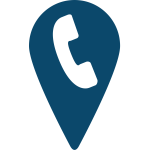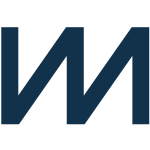About CallRail
CallRail provides businesses with tracking phone numbers that they can use to gather valuable customer interaction data from phone calls. This includes the source of the call - an advertisement on social media, for example - as well as information about the callers themselves. Additionally, once a call is completed, CallRail automatically generates a transcript of the call. By gathering this data, CallRail allows businesses to score their leads more easily and gauge the effectiveness of different marketing campaigns.
About ChartMogul
ChartMogul can turn new and existing business intelligence data into valuable analytics that companies can use to improve their market performance. ChartMogul can take subscriber data - both created within ChartMogul and imported from other data sources - and generate visualized analytics for a variety of metrics that SaaS companies care about.
Popular Use Cases
Bring all your CallRail data to Amazon Redshift
Load your CallRail data to Google BigQuery
ETL all your CallRail data to Snowflake
Move your CallRail data to MySQL
Bring all your ChartMogul data to Amazon Redshift
Load your ChartMogul data to Google BigQuery
ETL all your ChartMogul data to Snowflake
Move your ChartMogul data to MySQL
CallRail's End Points
CallRail Companies
Create separate companies with different configurations and tracking numbers. Then, you can retrieve information like the company’s name, creation date, lead scoring settings and company ID. This will allow you to track each different parameter in your analytics.
CallRail Users
Track any users who have access to your call data at various permission levels. This field provides you with contact information about the user - including their name, email, user ID, role and company - so that you can integrate your user and company data for analysis.
CallRail Accounts
Retrieve an account’s name and ID and choose whether or not to enable outbound call recording. Since this is the top level object for CallRail, you can also use that account ID to integrate data - such as “Company” or “Tracker” - that is generated by any lower level object within that account.
CallRail Integrations
Retrieve data from other data sources by integrating CallRail data with third party tools. The data in this field includes the name of the third party tool being integrated, the type of integration, its status, the unique integration ID, and associated companies. CallRail can use all of this data to provide more robust marketing analytics.
CallRail Trackers
Gather call data from tracking numbers that can either be linked to a specific source or associated with a particular visitor. This field can retrieve a variety of data from those calls, including the tracker ID, tracking numbers and associated companies. This information can help you qualify leads and gauge the effectiveness of marketing campaigns.
CallRail Calls
Retrieve data on an individual call, including the duration, source, phone number and status i.e., whether it was answered, missed, etc. Additionally, you can retrieve contact information for the caller, including their name, phone number, and whether or not CallRail rates the call as having provided a good lead.
ChartMogul's End Points
ChartMogul Plans
Gather data about your subscription plans - like the subscription IDs, names, billing intervals, and the number of intervals that are charged at once - to evaluate the performance of each plan. This will help you better understand the effectiveness of your plans so that you can determine which ones are more or less successful as a whole.
ChartMogul Customers
Create, retrieve, or update data for new or imported customers in ChartMogul. This allows you to see important customer contact details, customer IDs, and valuable performance data including a customer’s MRR, ARR, and industry sector. You can then use that data to better segment your customers, which can provide more accurate and specific information about your business performance.
ChartMogul Invoices
Import invoice data for customers that you are tracking through ChartMogul, including customer IDs, dates of purchase, transactions, and any relevant line items. Then, use ChartMogul to create subscription data for those customers and use that data to track more specific revenue data, both in ChartMogul and in your other data sources.
ChartMogul Transactions
Track payments or refunds made on an invoice to see the transaction ID, type of transaction, transaction date, and whether or not the transaction was successful. This can help you get more accurate analytics from your invoice data. It can also indicate when there is an unusually high number of refunds, which could signal a problem worth addressing.
ChartMogul Subscriptions
Get a list of subscriptions that ChartMogul has automatically generated from invoice data. This endpoint returns several IDs - including subscription IDs, customer IDs, plan IDs, and data source IDs - that will help you to more easily track and integrate data between any of those parameters to create deeper, more accurate business analytics.
ChartMogul Tags
Use tags to track terms that are associated with a customer so that you can segment or monitor them more specifically. For example, you could tag a particular customer as “high priority,” “returning” or anything else that is relevant to your business, and then retrieve a list of customers who have been tagged with those attributes in order to analyze them as a segment.
ChartMogul Custom Attributes
Update customer data with ChartMogul custom attributes that are more specific to the needs of your company. This can include both tags as well as more complex custom attributes. Then, track those attributes in ChartMogul to get analytics that are focused on your particular business concerns.








